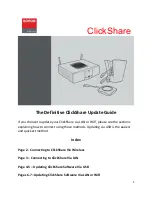Reviews:
No comments
Related manuals for Cortex-M4

Event Master E2
Brand: Barco Pages: 2

ClickShare
Brand: Barco Pages: 7

RVP10
Brand: Vaisala Pages: 34

SP 366
Brand: ECG Pages: 24

RSM 01
Brand: ECG Pages: 28

70825
Brand: Hamilton Beach Pages: 96

KUCHENminis One for All
Brand: WMF Pages: 124

DSP 322UA
Brand: QSC Pages: 20

QG-KIT-VA-3IN-B
Brand: QualGear Pages: 6

AVP1A
Brand: Harman Kardon Pages: 32

Big Mouth 70570C
Brand: Hamilton Beach Pages: 44

RJ13-4-AFC Series
Brand: Chefman Pages: 21

T18002
Brand: Tower Hobbies Pages: 16

T18001
Brand: Tower Hobbies Pages: 16

ST-FP7072
Brand: Saturn Pages: 47

Supvex
Brand: Reflecta Pages: 2

PR-N101+
Brand: Prijector Pages: 20

GTM-8216
Brand: Kuchef Pages: 24

















